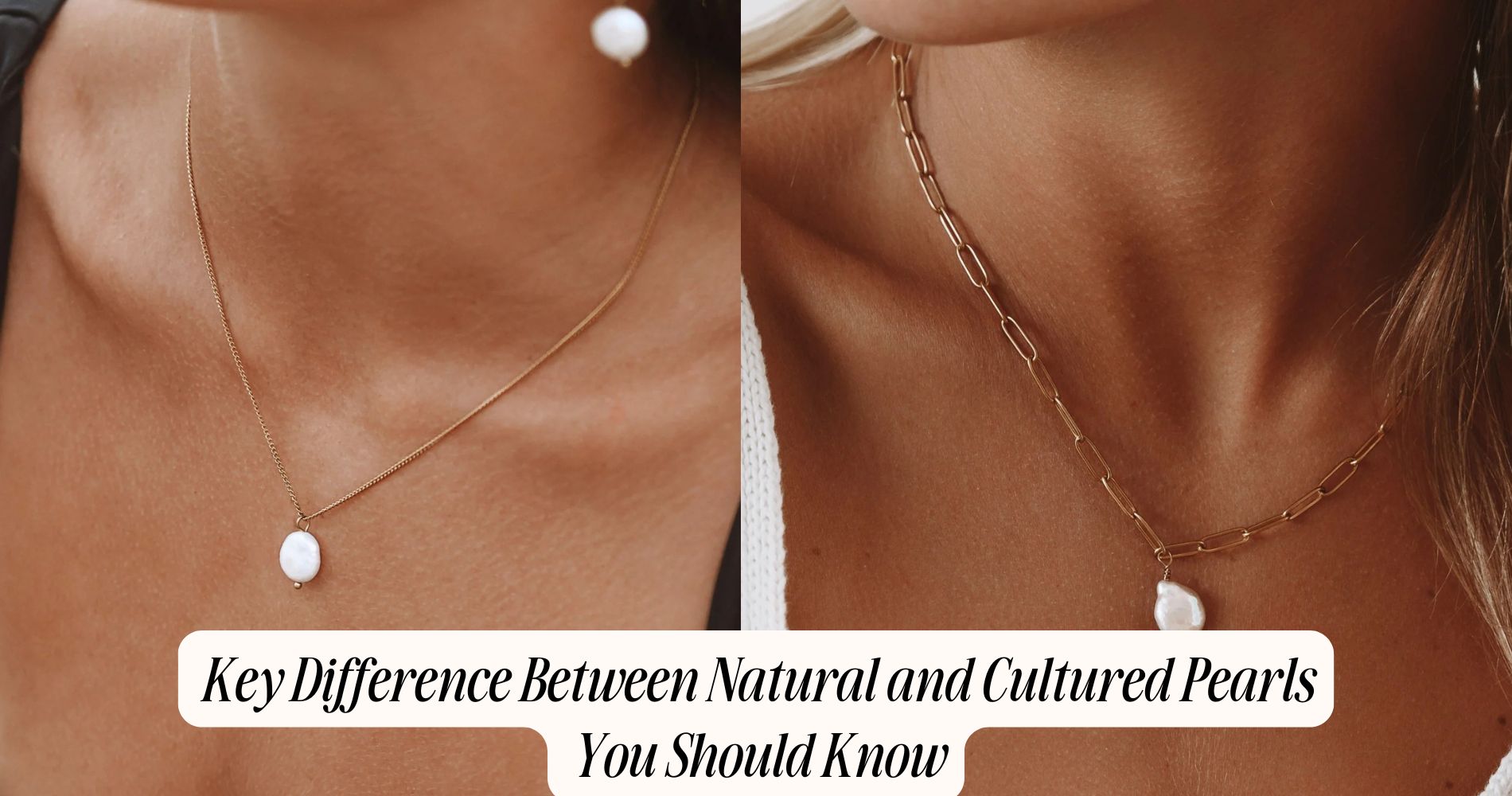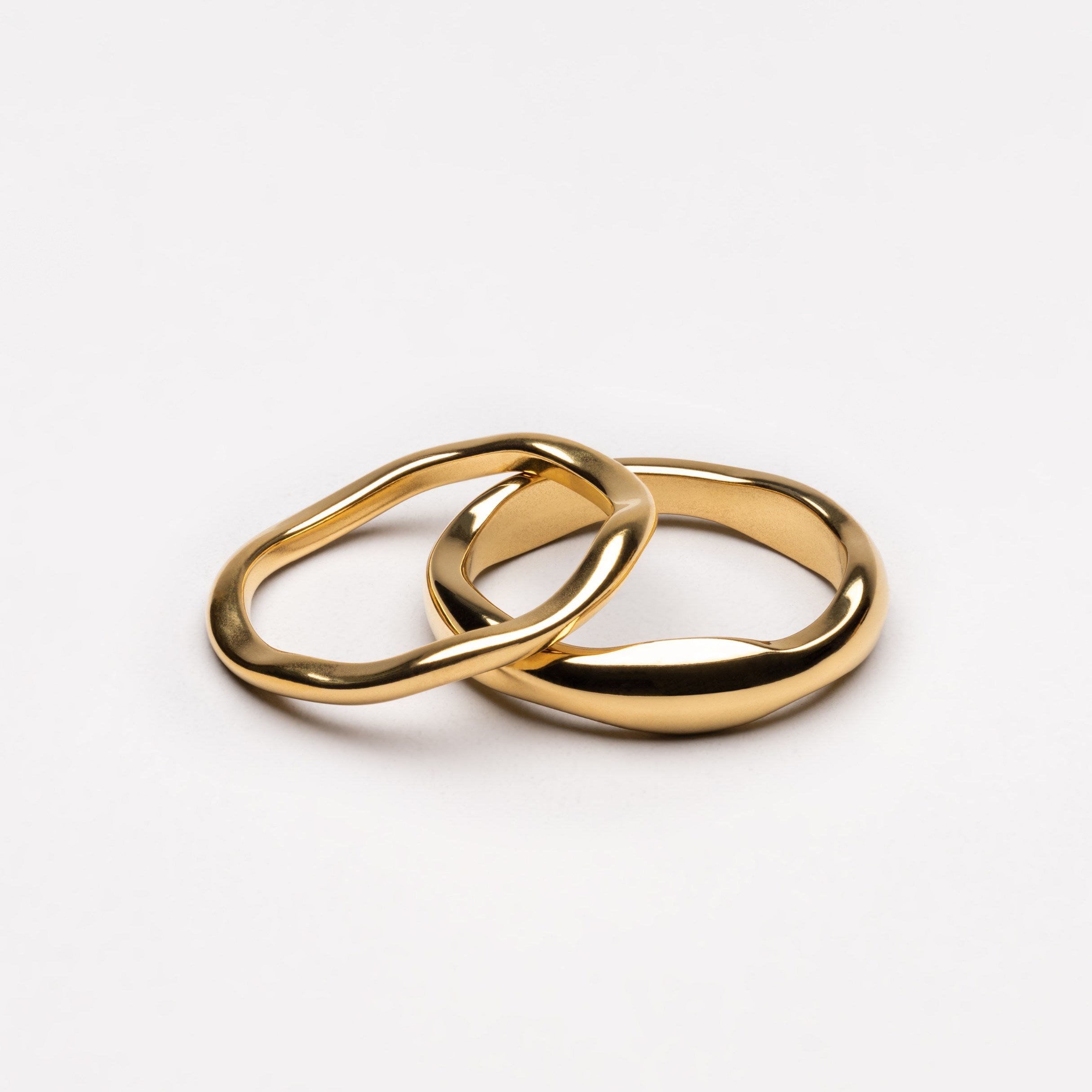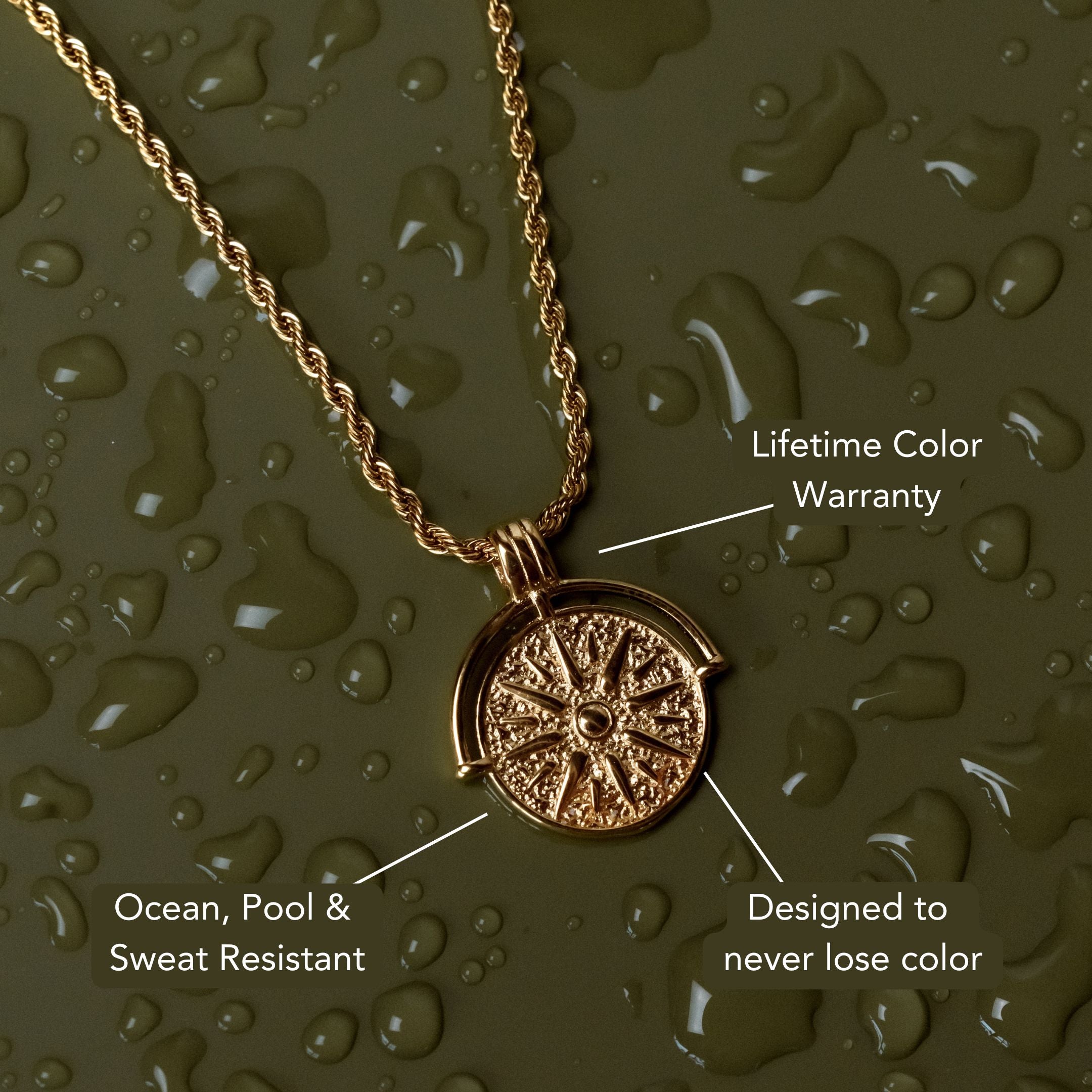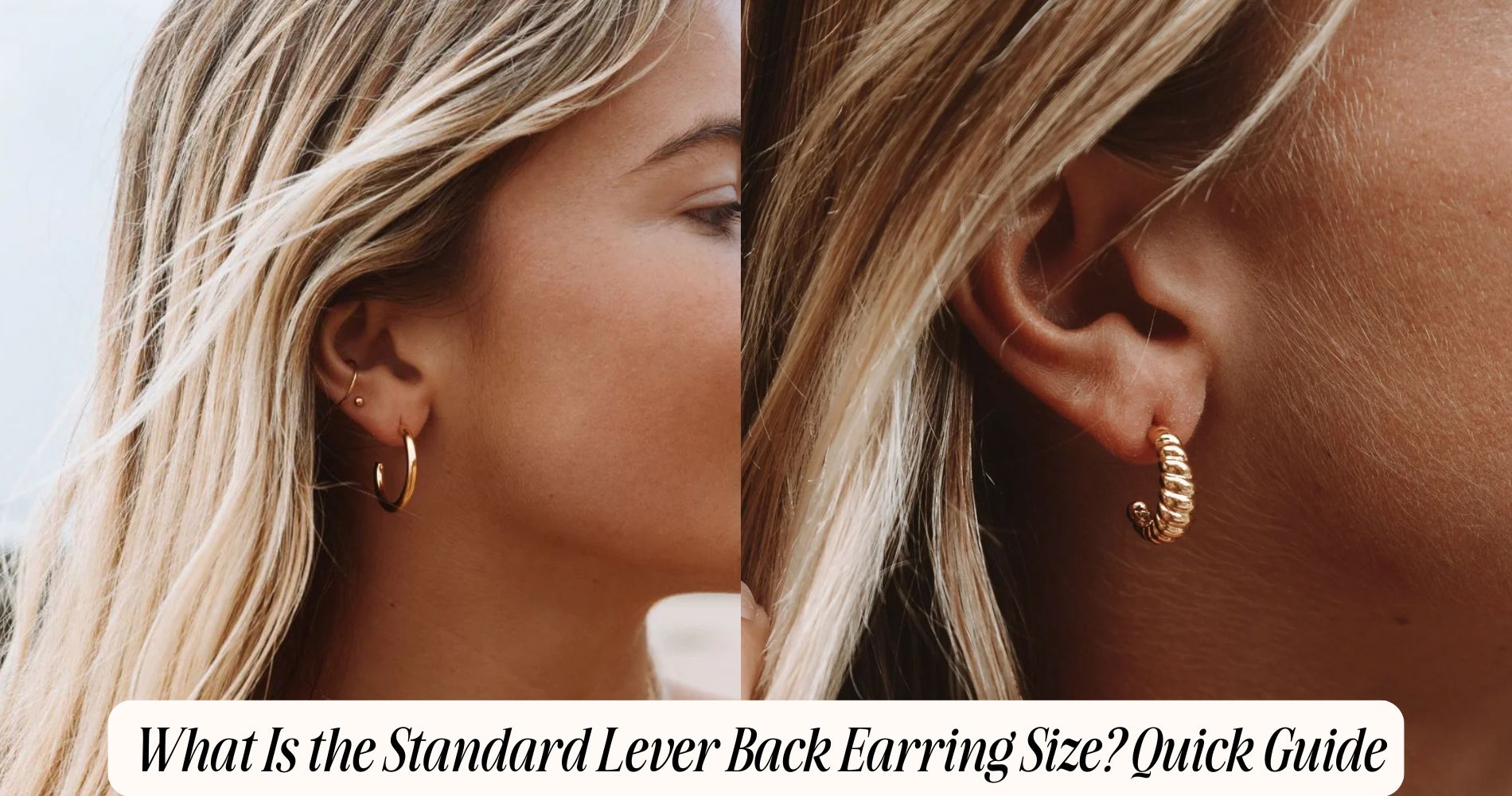
Key Difference Between Natural and Cultured Pearls You Should Know
Understanding the difference between natural and cultured pearls starts with how they form. Natural pearls develop entirely on their own inside mollusks, without any human involvement. In contrast, cultured pearls are created by carefully implanting a small nucleus into the mollusk to stimulate nacre production. Natural pearls are rare and often display a softer luster and more irregular shapes, while cultured pearls are more uniform and widely available. To see how cultured pearls shine in modern jewelry, explore the details below — or browse our pearl drop necklace collection for elegant examples.
How Natural Pearls Are Formed
When a microscopic irritant, such as a parasite or grain of sand, becomes trapped inside a mollusk, the organism initiates a defensive response by secreting layers of nacre—also known as mother-of-pearl—around the intruder.
You’ll observe that this nacre layering process is fundamental to natural pearl formation. In detail, specialized epithelial cells within the mollusk’s mantle deposit concentric sheets of aragonite and conchiolin, creating a composite structure identical to oyster shell formation.
Over time, as these layers accumulate, the irritant is fully encased, resulting in a pearl with unique luster and iridescence. The process is entirely organic, arising without human intervention, and the resulting pearls are rare due to the infrequency and unpredictability of such natural irritant intrusions within the mollusk’s tissue.
The Creation Process of Cultured Pearls
Unlike natural pearls, cultured pearls result from deliberate human intervention within the mollusk’s biological processes. You’ll find that technicians use surgical precision to implant a nucleus—often a small bead—along with a piece of donor mantle tissue into the mollusk.
This triggers the mollusk’s biological mechanisms, causing it to secrete layers of nacre around the nucleus, efficiently simulating nature’s process. Technological advancements have refined this technique, ensuring higher success rates and consistent pearl quality.
You must monitor environmental factors, such as water temperature and cleanliness, to optimize nacre deposition. Over several months to years, the mollusk forms a pearl with desired luster and shape.
Rarity and Availability in the Market
Only a small fraction of pearls available on the global market are natural, as these form spontaneously in wild mollusks without human intervention and require ideal environmental conditions that are increasingly rare.
You'll find that the rarity perception of natural pearls drives significant market demand among collectors and investors. Cultured pearls, by contrast, are produced in controlled environments, making them far more abundant and readily accessible.
This engineered supply directly impacts the overall availability and stabilizes pricing for consumers. Because natural pearls are scarce due to overharvesting, environmental degradation, and low incidence rates, their presence in the marketplace is minimal.
If you're evaluating market options, natural pearls' rarity translates to premium value, while cultured pearls dominate retail offerings due to their consistent production and widespread distribution channels.
Differences in Appearance and Quality
Although both natural and cultured pearls share the same fundamental composition of crystalline calcium carbonate and organic conchiolin, distinct differences emerge in their appearance and quality due to their origins.
When you examine luster differences, natural pearls typically exhibit a softer, more subtle glow, resulting from the irregular layering of nacre. Cultured pearls, however, often display a more pronounced, mirror-like luster, reflecting the controlled environment in which they form.
Surface textures further distinguish the two. You’ll notice that natural pearls tend to have more organic, uneven surfaces with unique imperfections, while cultured pearls are usually smoother and more uniform.
Shape consistency is another key indicator; cultured pearls are often rounder, whereas natural pearls may present asymmetry due to less predictable growth conditions.
Value and Pricing Comparisons
The physical distinctions between natural and cultured pearls strongly influence their market value and pricing structure. Natural pearls, formed without human intervention, are exceedingly rare, which drives their prices considerably higher.
When you conduct a value assessment, you’ll notice that cultured pearls are more abundant due to controlled farming processes, resulting in lower pricing differences compared to their natural counterparts. Dealers consider factors such as luster, nacre thickness, surface quality, shape, and size when determining the final price.
Natural pearls usually command premium prices in auctions and collectors’ markets because each specimen is unique and difficult to replicate. Conversely, cultured pearls offer consistency, making them more accessible and affordable.
Understanding these pricing differences enables you to make informed purchasing decisions based on rarity and intrinsic qualities.
Environmental Impact and Sustainability
While both natural and cultured pearls originate from mollusks, their production processes carry distinct environmental implications. When you consider natural pearls, you’re looking at a process that often involves indiscriminate oyster harvesting, resulting in habitat disruption and a significant ecological footprint. Overharvesting can endanger mollusk populations, making sustainable harvesting challenging.
In contrast, cultured pearls leverage controlled aquaculture techniques, allowing you to regulate environmental variables and reduce pressure on wild oyster beds. This method typically supports better resource management and fosters rehabilitation of marine habitats. However, intensive pearl farming can also introduce pollutants and disease if not properly managed.
Evaluating sustainability involves analyzing both the sourcing practices and the long-term ecological impact, helping you choose pearls with minimal negative effects on marine ecosystems.
Identification and Testing Methods
Evaluating a pearl’s origin requires specialized identification and testing methods, as environmental considerations often influence consumer choices. You’ll need to focus on both external and internal characteristics.
Start with surface examination: scrutinize for minute imperfections, growth features, or drill hole patterns. Natural pearls usually exhibit irregularities, while cultured pearls often have more consistent nacre layering. However, surface clues alone aren’t definitive.
For conclusive analysis, employ X-ray testing. X-ray imaging reveals the internal structure—natural pearls display concentric growth rings without a clear nucleus, whereas cultured pearls show a distinct bead nucleus typically surrounded by uniform nacre layers.
Combining surface examination with X-ray testing allows you to accurately distinguish between natural and cultured pearls, ensuring informed decisions based on scientific evidence and transparency.
Common Uses in Jewelry
Although both natural and cultured pearls serve as focal points in fine jewelry, their typical applications differ due to availability, size, and uniformity.
When selecting pearls for jewelry design, you’ll notice that natural pearls, given their rarity and irregular shapes, are often reserved for bespoke or high-value creations such as solitaire rings, pendants, or collector’s pieces. Their unique forms influence the pearl setting, requiring custom mounts and careful orientation to maximize luster.
In contrast, cultured pearls offer greater consistency in size, shape, and surface quality, making them ideal for matched strands, earrings, and bracelets. You can reliably use cultured pearls in symmetrical arrangements and standardized pearl settings, which streamlines the manufacturing process and ensures a cohesive appearance in multi-pearl jewelry designs.
Historical Significance and Cultural Value
The way pearls are used in jewelry stems not only from their physical characteristics but also from their deep-rooted significance across civilizations. When you examine the traditional significance of pearls, you’ll find they’ve symbolized purity, wealth, and power throughout history.
In ancient Rome and China, natural pearls were considered status symbols, reserved for nobility and royalty. It’s essential to distinguish myth vs fact: while legends attribute mystical powers to pearls, their actual value lies in rarity and luster.
With the advent of cultured pearls in the early 20th century, accessibility increased, but their cultural value remains distinct. You’ll notice that natural pearls still command higher esteem in traditional contexts, reflecting historical scarcity and the reverence societies have attached to these organic gems.
Factors to Consider When Buying Pearls
When selecting pearls, you’ll need to assess several critical factors that directly impact both value and appearance. Evaluate luster first; high-quality pearls exhibit sharp, mirror-like reflections. Surface quality is equally important—fewer blemishes indicate superior grading.
Examine shape, as round pearls remain the most valuable due to rarity. Size also plays a significant role; larger pearls typically command higher prices. Consider origin—natural pearls are rarer and pricier than cultured varieties.
Don’t overlook branding strategies; reputable brands may employ unique grading systems or certifications, providing added assurance. Stay current with marketing trends, as they often influence demand for specific pearl types, colors, or origins.
Frequently Asked Questions
Can Pearls Be Artificially Colored or Treated After Harvesting?
You can enhance pearls after harvesting through pearl dyeing and various surface treatments. These techniques alter color, luster, or overtones, allowing you to achieve specific aesthetic results while maintaining overall structural integrity and commercial value.
Are Natural or Cultured Pearls More Hypoallergenic?
You’ll find that pearl composition in both natural and cultured pearls is nearly identical—mainly nacre—minimizing allergic reactions. Unless pearls are treated or dyed, neither type is more hypoallergenic, as both lack common allergenic proteins.
How Should Pearls Be Cleaned and Stored Properly?
For ideal pearl cleaning methods, you should gently wipe pearls with a soft, damp cloth after wearing. For pearl storage tips, avoid airtight containers; instead, use a soft pouch to prevent abrasion and maintain nacre integrity.
Do Pearls Have Any Spiritual or Health-Related Beliefs?
You’ll find pearls often attributed with spiritual significance, believed to symbolize purity and wisdom. Some cultures claim health benefits, asserting pearls can balance bodily energies or promote emotional stability, though empirical evidence supporting such effects remains scientifically inconclusive.
What Are the Main Regions Producing Cultured Pearls Today?
You’ll find major pearl farming regions in Japan, China, Australia, and French Polynesia. These cultured pearl countries utilize advanced grafting techniques, ideal water conditions, and selective breeding to maximize pearl quality, yield, and sustainability in global markets.
Conclusion
When choosing between natural and cultured pearls, you’ll need to assess factors like formation process, rarity, and market value. Natural pearls, formed organically, are exceptionally rare and command premium prices, while cultured pearls are more accessible and consistent in quality. Examine surface characteristics, luster, and nacre thickness for authenticity and quality assessment. Employ gemological testing for accurate identification. By understanding these technical distinctions, you’ll make informed decisions when investing in or selecting pearls for jewelry purposes.























Leave a comment
This site is protected by hCaptcha and the hCaptcha Privacy Policy and Terms of Service apply.